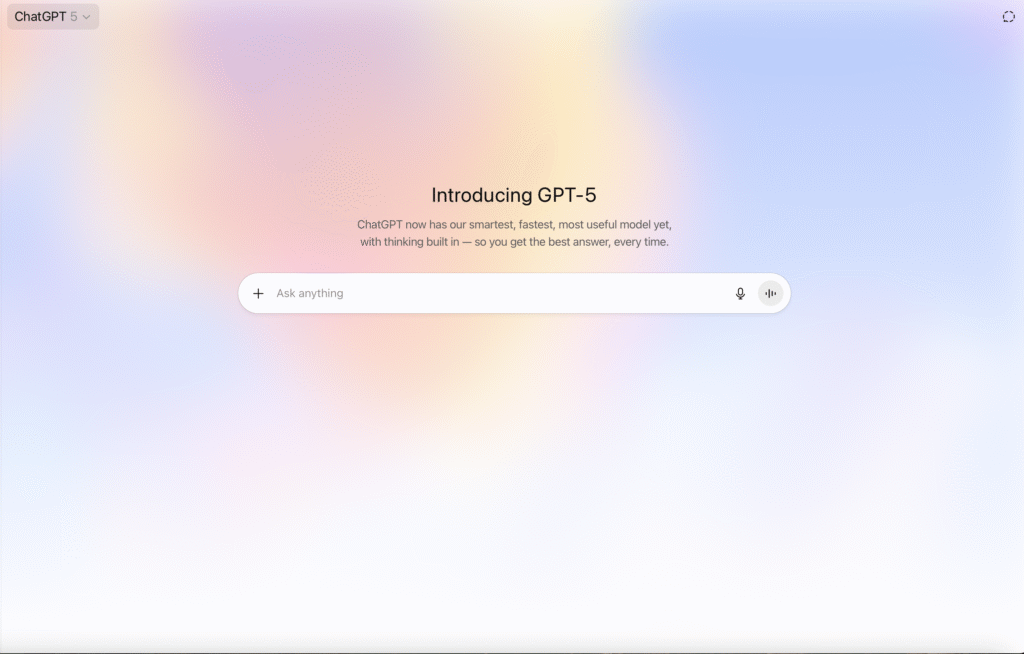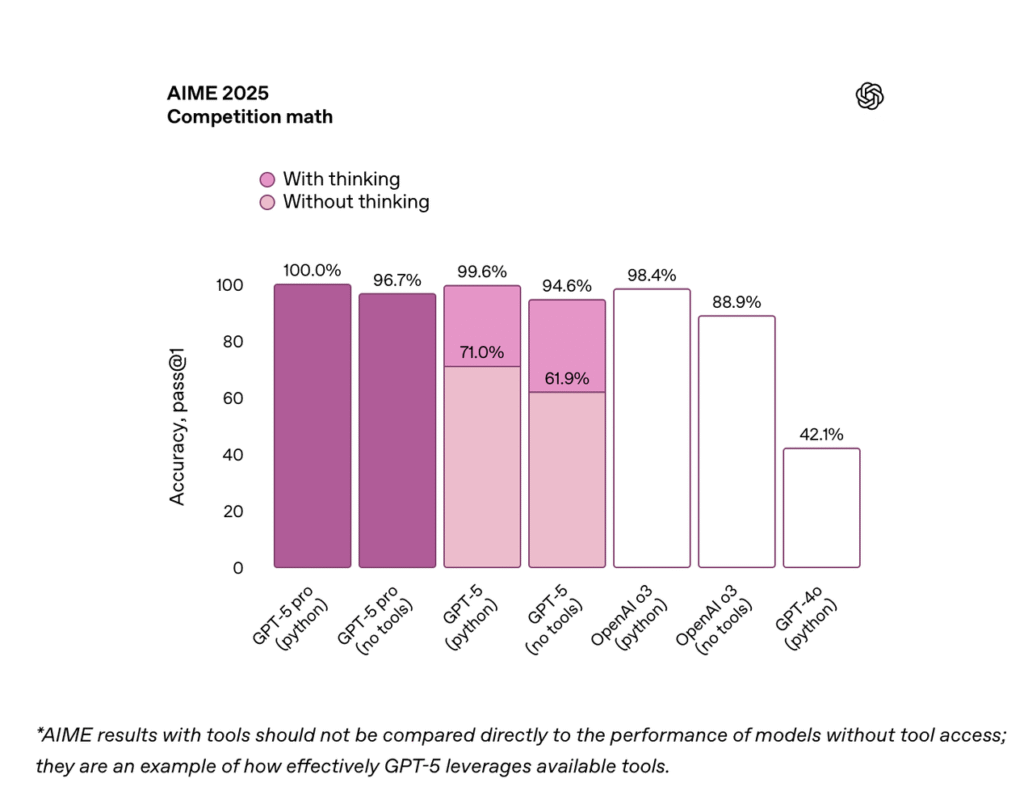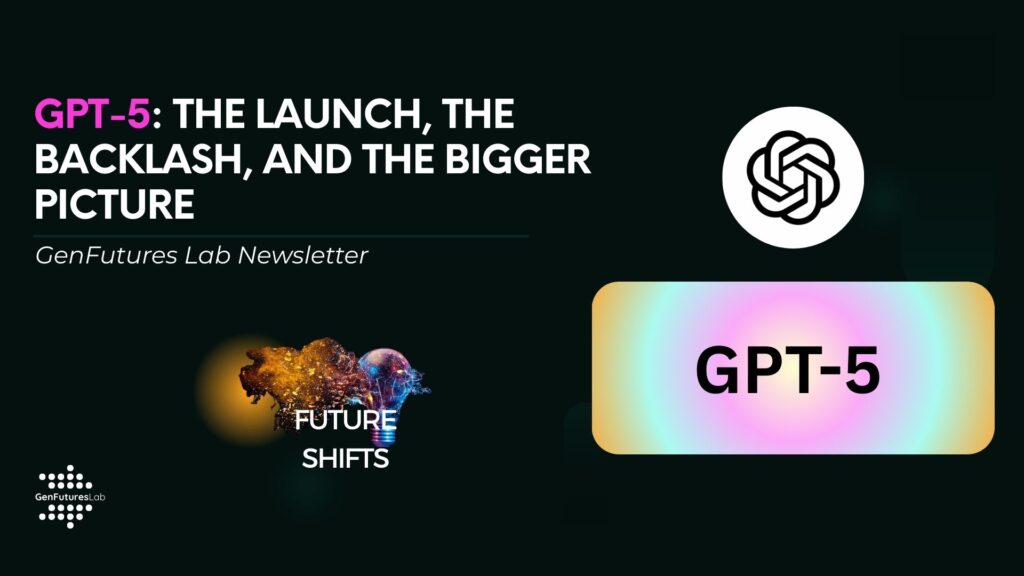On 7 August 2025, OpenAI released GPT-5, its latest and most advanced language model. Marketed as a leap forward in reasoning, multimodal capabilities, and personalisation, GPT-5 was meant to replace GPT-4, GPT-4o, and other variants as the default in ChatGPT.
But just 24 hours later, GPT-4o was back. Why? The answer says as much about human expectations as it does about AI progress.
What GPT-5 Brings to the Table
According to OpenAI’s announcement, GPT-5 is built as a unified system. It combines a fast, lightweight model for simple requests with a deeper reasoning model for complex tasks, using a real-time “router” to decide when to think harder.
The model can:
- Write, code, and analyse across text, images, and audio.
- Deliver more accurate answers with fewer hallucinations.
- Maintain a consistent tone (Useful for tailoring outputs to brand or professional voices).
- Handle longer context, making it better at working with detailed documents or multi-step tasks.
For businesses, these upgrades could translate into clearer reports, faster coding, and smoother client communications. A financial analyst could run scenario models with more confidence; HR teams might automate policy drafts without heavy editing.

How It Compares to GPT-4
GPT-5 isn’t just “GPT-4 but better.” It’s designed to replace multiple models: the general GPT-4, the faster GPT-4o, and specialised reasoning versions like o3.
OpenAI also released variants – Mini, Nano, and Pro – to balance cost, speed, and performance. For example:
- Mini is ideal for quick customer queries or lightweight summarisation.
- Pro is tuned for intensive reasoning, like complex legal analysis or multi-variable data modelling.
The core difference lies in when and how the model decides to spend more computing power on your request, aiming to deliver the “right amount” of intelligence without wasting resources.

The Mixed Reception
Despite the technical advances, not everyone was impressed.
Early users praised its accuracy in coding tests and its ability to sustain more nuanced reasoning. But others felt it had lost something in personality. One popular post described GPT-5 as a “corporate beige zombie”, efficient but bland.
The backlash was swift. Within a day, OpenAI reinstated GPT-4o as an option. Sam Altman, OpenAI’s CEO, acknowledged on X that the launch had been “bumpy,” adding:
“Some people form a real emotional connection with their favourite model. Change is hard. We’ll keep improving and offering choice.”
This move highlights a tension in AI development: better doesn’t always mean more loved.
Why GPT-4 Came Back
For many users GPT-4o wasn’t just a tool but it was a collaborator they’d grown to trust. The change in tone and response style in GPT-5, while subtle to some, felt jarring to others.
It’s a reminder that AI adoption is about comfort and trust as much as capability. In the same way a colleague’s sudden change in working style can unsettle a team, an AI’s shift in voice can break workflow habits.
So, Is GPT-5 a Game-Changer?
Technically, GPT-5 represents a significant step forward:
- More context awareness.
- Smarter allocation of processing.
- Better multimodal handling.
- Safer, more consistent outputs.
For large and medium-sized organisations, these changes could streamline decision-making, reduce manual work, and make AI more predictable.
However, the GPT-4o episode shows that user sentiment will play a big role in how and when organisations fully transition. If teams feel the AI “gets them” less well, they may resist even if the new model is objectively more capable.
From Prompt to Prototype in Under a Minute
To put GPT-5’s capabilities to the test, I challenged it to build a complete German language learning website for English speakers in seconds. The result? A fully planned platform with daily progress tracking, quizzes, flashcards, pronunciation practice, and even sample code ready to run. In the below video, you’ll see exactly how I prompted GPT-5, what it delivered, and how quickly an idea can turn into a working web app.
Looking Ahead
OpenAI insists GPT-5 is not Artificial General Intelligence (AGI), but rather a safer, smarter, more adaptable assistant. In practice, that means businesses will need to evaluate:
- Which version fits their workflows.
- How much they value reasoning depth over conversational feel.
- How to train teams to work effectively with evolving AI tools.
As AI becomes more central to work, technical change will always need careful human change management. The GPT-5 launch both its innovation and its backlash is proof of that.
GenFutures Lab helps organisations navigate AI adoption with clarity, compliance, and creativity. Need tailored training, benchmarking, or policy guidance? Contact us to get started: https://genfutures.co.uk/contact-us/


